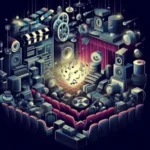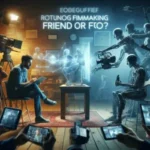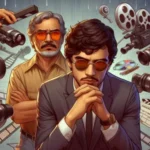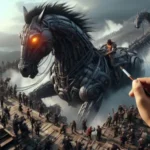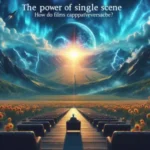In the world of filmmaking and video production, the magic often lies not just in the initial shooting but in the meticulous art of editing.
Editing is the unsung hero that shapes the narrative, refines the visuals, and ultimately transforms the viewer’s experience. It is during this crucial phase that raw footage is sculpted into a cohesive story, guiding the audience through emotional highs and lows, creating suspense, and enhancing engagement. Whether it’s through the careful selection of shots, the rhythm of cuts, or the strategic use of sound, editing has the power to elevate a simple scene into a breathtaking moment that resonates long after the credits roll. In this blog post, we will delve into the transformative journey of editing, exploring techniques and insights that illustrate how thoughtful cuts can masterfully direct the viewer’s journey, ensuring that each frame captivates, intrigues, and enchants. Join us as we uncover the secrets behind the cut and celebrate the artistry that breathes life into every narrative.
1. Introduction to Editing: The Unsung Hero of Storytelling
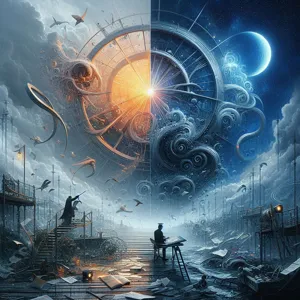
In the world of filmmaking and video production, editing often takes a backseat to more glamorous aspects like cinematography, acting, and special effects. However, it is the unsung hero of storytelling, weaving together disparate elements into a cohesive narrative that captivates and engages the audience. Editing is not merely a technical process; it’s an art form that shapes the viewer’s journey, influencing emotions, pacing, and overall impact.
Consider the way a masterfully edited film can create tension in a thriller, evoke laughter in a comedy, or deliver a poignant moment in a drama. Each cut, transition, and pacing decision serves a purpose, guiding the viewer through the narrative landscape. Editing dictates the rhythm of a story, determining how quickly or slowly events unfold. A rapid succession of cuts can ignite excitement or anxiety, while longer takes can foster introspection and connection with characters.
Moreover, editing is essential for maintaining continuity and coherence in storytelling. It ensures that each scene flows seamlessly into the next, keeping the audience immersed in the narrative. Through techniques like cross-cutting and parallel editing, editors can juxtapose different storylines, highlighting contrasts and connections that enrich the overall experience.
As we delve deeper into the transformative power of editing, we will explore its various techniques, its role in enhancing storytelling, and how a skilled editor can elevate a good story into a great one. Join us on this journey to master the cut and discover how the art of editing shapes not just what we see, but how we feel.
2. Understanding the Role of Editing in Film and Video
Editing is often regarded as the invisible art of filmmaking, a meticulous craft that shapes the viewer’s experience without them even realizing it. At its core, editing is not just about splicing together shots; it’s a powerful storytelling tool that orchestrates the rhythm, mood, and emotional impact of a narrative. As the bridge between raw footage and the final product, editing plays a crucial role in guiding the audience’s journey through the film or video.
One of the primary functions of editing is to create continuity. By carefully selecting and arranging shots, editors ensure that the story flows seamlessly, maintaining spatial and temporal coherence. This means that every cut, transition, and fade must be strategically chosen to help the viewer understand where they are in the narrative and how the characters and events relate to one another. Without this careful crafting, audiences can easily become disoriented, detracting from their engagement with the story.
Moreover, editing significantly influences pacing, controlling how quickly or slowly a story unfolds. For instance, rapid cuts can heighten tension during an action sequence, propelling the audience forward and eliciting adrenaline-fueled excitement. Conversely, slower edits can create moments of reflection, allowing the viewer to absorb the emotional weight of a scene. The editor’s choice of timing and rhythm not only dictates the film’s tempo but also reinforces its thematic elements, subtly guiding viewers to feel a particular way about what they are witnessing.
Additionally, editing allows for the layering of narrative elements, weaving together different storylines, perspectives, or timelines. This technique enhances complexity and richness, providing depth to the storytelling. Flashbacks, montages, and juxtaposed images can reveal character motivations, create suspense, or even provide comic relief, all while maintaining the audience’s investment in the overarching narrative.
In essence, understanding the role of editing in film and video is recognizing its power to transform a collection of scenes into a compelling story. It shapes not just what the audience sees, but how they feel and think about what they see. Mastering this art of editing can elevate a good film into a great one, ensuring that the viewer’s journey is not just watched, but felt deeply.
3. The Psychology of Cuts: How Editing Affects Viewer Perception
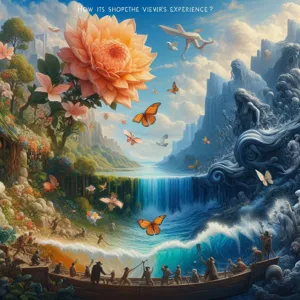
Editing is more than just a technical process; it’s a psychological art form that shapes the way viewers perceive a story. The rhythm and pacing of cuts can evoke a spectrum of emotions, guiding the audience through the narrative with a deft hand. Each cut serves as a psychological cue, influencing how viewers react to what they see on screen.
For instance, quick cuts can create a sense of urgency or tension, propelling the audience forward and heightening their emotional investment. Think of a thrilling chase scene—rapid edits can mimic the adrenaline rush, making hearts race and breaths quicken. In contrast, longer takes allow viewers to linger in a moment, fostering intimacy and reflection. This subtle manipulation of time creates a powerful connection between the audience and the narrative, inviting them to absorb the depth of a character’s experience or the weight of a climactic event.
Moreover, the choice of transitions—whether a simple cut, a fade, or a wipe—carries its own psychological weight. A smooth dissolve may suggest a passage of time or a shift in mood, while a jarring cut can evoke shock or surprise. These decisions are not arbitrary; they tap into the viewers’ subconscious, leveraging their expectations and emotions to enhance storytelling.
Understanding the psychology of cuts is essential for any filmmaker or content creator aiming to master the viewer’s journey. By harnessing the power of editing, you can craft a narrative that resonates deeply, ensuring that your audience is not just a passive observer but an engaged participant in the unfolding drama. Ultimately, effective editing transforms a simple sequence of images into an evocative experience, leaving a lasting impression long after the credits roll.
4. Types of Cuts: From Jump Cuts to Cross-Cutting
Editing is the invisible art that shapes a film’s narrative, guiding the viewer’s emotional journey through the strategic use of various cuts. Understanding the different types of cuts is essential for any filmmaker looking to master this craft. Each cut serves a unique purpose, creating a distinct rhythm and flow that can either enhance or detract from the story being told.
**Jump Cuts** are a staple in modern editing, often used to compress time or heighten intensity. By cutting out sections of a continuous shot, they create a jarring effect that can surprise the audience or convey a character’s frantic state of mind. Think of the frenetic energy in a montage sequence, where time seems to warp as we zoom through a character’s day. This technique not only maintains viewer engagement but also allows for inventive storytelling, giving the audience a feeling of urgency and immediacy.
On the other hand, **Cross-Cutting**—often referred to as parallel editing—serves to weave together two or more storylines happening simultaneously. This technique builds tension and anticipation as the viewer is drawn back and forth between disparate scenes, creating a sense of interconnection. The classic example can be found in action films, where a hero is in a race against time to save the day, switching between their journey and the antagonist’s devious plans. Cross-cutting not only heightens suspense but also deepens character development, allowing audiences to witness how different narratives converge.
As filmmakers explore these and other types of cuts—such as match cuts, cutaways, and fade-outs—they unlock the potential to shape the viewer’s experience profoundly. Each cut is a brushstroke on the canvas of storytelling, and when executed thoughtfully, they transform the viewer’s journey, creating a compelling and cohesive narrative that resonates long after the credits roll. Understanding and mastering these various cuts is essential for anyone looking to elevate their storytelling, making each edit a purposeful choice that enhances the overall impact of the film.
5. Building Tension Through Timing and Pacing
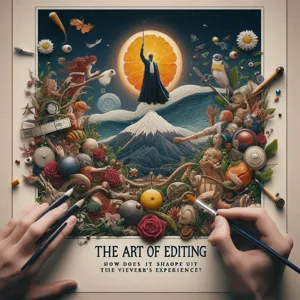
Building tension through timing and pacing is a crucial element in the art of editing, transforming a viewer’s experience from mere observation to an emotional rollercoaster. The rhythm of a film or video can dictate how audiences feel, react, and engage with the storyline, making pacing a powerful tool in an editor’s arsenal.
Imagine the palpable suspense in a thriller where the editor strategically slows down the pace just before a climactic moment, allowing the tension to simmer. Each second feels like an eternity, heightening the audience’s anticipation and drawing them deeper into the narrative. Conversely, rapid cuts during an action sequence can create an exhilarating rush, propelling viewers through the chaos and adrenaline of the moment. This juxtaposition of slow and fast pacing can evoke a dynamic range of emotions, from anxiety to excitement, keeping the audience on the edge of their seats.
Moreover, effective use of timing isn’t just about speed; it’s also about knowing when to pause. A well-placed silence or a lingering shot can speak volumes, giving the audience space to absorb the weight of a pivotal scene. It’s in these pauses that viewers reflect on character motivations and the implications of the unfolding drama, thereby deepening their connection to the story.
In crafting this tension, editors must also consider the rhythm of dialogue. The interplay between characters is often enhanced by carefully timed cuts that emphasize emotional beats or reactions. A character’s subtle glance or a pregnant pause can be amplified through editing, creating a richer narrative tapestry that resonates with viewers long after the credits roll.
Ultimately, mastering the dance of timing and pacing is essential in editing. It transforms the viewer’s journey, guiding them through a carefully orchestrated experience that balances tension and release, ensuring that every moment is not just seen but felt. By honing this skill, editors can elevate their work from simple storytelling to an immersive emotional experience that captivates audiences.
6. The Power of Transitions: Seamless vs. Jarring Cuts
The art of editing is often most vividly showcased in the transitions between scenes, where the viewer’s journey can either flow effortlessly or be jolted into disarray. Understanding the nuances of transitions is crucial for any editor looking to master their craft and enhance the storytelling experience.
Seamless cuts are the unsung heroes of editing, creating a fluid narrative that guides viewers smoothly from one scene to the next. These transitions often employ techniques such as match cuts, where the action or composition in one scene mirrors that of the next, allowing the audience to glide through the story without interruption. Such transitions are particularly effective in maintaining the emotional momentum of a scene, allowing viewers to stay immersed in the narrative without distraction. A well-timed dissolve or fade can also soften the passage of time or signify a shift in emotion, subtly transitioning the viewer into a new phase of the story without missing a beat.
In stark contrast, jarring cuts can serve a powerful purpose when used intentionally. These abrupt transitions can invoke surprise, create tension, or draw attention to a critical moment in the narrative. Think of a horror film that cuts suddenly from a serene scene to a shocking revelation; the abruptness can send chills down the spine, amplifying the emotional impact. Similarly, an unexpected cut during a dialogue scene can emphasize a character’s change in mood or foreshadow an impending conflict, leaving viewers on the edge of their seats.
Ultimately, the choice between seamless and jarring cuts hinges on the story being told and the emotional journey intended for the audience. Mastering the power of transitions allows editors to manipulate pacing, enhance storytelling, and create a more engaging viewing experience. Whether crafting an uninterrupted flow that lulls the viewer into the world of the film or employing sharp, startling cuts that keep them on their toes, the right transitions can transform a simple viewing into a memorable journey.
7. Creating Emotional Impact with Strategic Edits
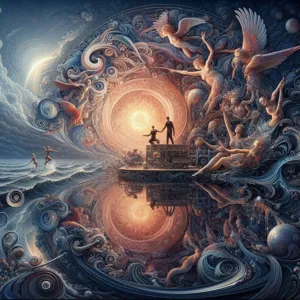
The power of editing goes far beyond mere cuts and transitions; it is a vital tool in shaping the emotional landscape of your narrative. Strategic edits can evoke feelings ranging from joy to despair, excitement to contemplation, all of which significantly enhance the viewer’s journey through your story.
Imagine a scene where a character experiences heartbreak. A slow, lingering edit, allowing the viewer to absorb the weight of the moment, can amplify the emotional depth. Conversely, quick cuts juxtaposed against a poignant score can create a sense of urgency and tension, immersing the audience right into the character’s turmoil. By manipulating pacing and rhythm, you can guide the audience’s emotional response, ensuring they feel every high and low.
Consider the impactful use of flashbacks or montage sequences. These techniques can add layers to your story, providing context and backstory that resonate emotionally with viewers. A well-timed flashback can illuminate a character’s motivations, making their journey more relatable and poignant. Similarly, a montage set to an evocative soundtrack can encapsulate a character’s growth, stirring feelings of nostalgia or inspiration in the audience.
Additionally, color grading and sound design play crucial roles in enhancing emotional impact. A warm color palette might evoke feelings of comfort and happiness, while cooler tones can suggest isolation and sadness. Coupling these visual elements with sound—whether it’s a haunting melody or a heart-pounding score—creates a sensory experience that deepens the emotional connection.
Ultimately, the art of editing is about crafting moments that resonate. By employing strategic edits purposefully, you not only tell a story but also forge an emotional bond between your audience and your characters. This connection is what keeps viewers invested, ensuring they are not just observers but participants in the emotional journey you’ve created.
8. The Importance of Consistency in Narrative Flow
In the realm of editing, consistency in narrative flow is paramount. A well-edited film or video doesn’t just tell a story; it guides viewers through an immersive experience, maintaining their engagement from the opening shot to the final credits. Consistency helps create a seamless transition between scenes, allowing the audience to stay invested in the characters and the unfolding plot without the jarring disruptions that can occur from abrupt cuts or disjointed pacing.
Imagine watching a film that jumps erratically between timelines or shifts abruptly in tone; it can leave viewers disoriented and disengaged. In contrast, effective editing ensures that each scene flows logically into the next, creating a coherent narrative structure. This involves not only the technical aspects of cuts and transitions but also the emotional beats that resonate with the audience. By aligning the pacing with the story’s emotional arc, editors can amplify tension, heighten drama, or elicit laughter when appropriate.
Moreover, maintaining consistency in visual style and sound design further enriches the viewer’s journey. Whether it’s through color grading that enhances the mood or sound effects that ground a scene in reality, these elements work together to create a unified experience. Consistent use of motifs, themes, and visual cues also strengthens the narrative, allowing viewers to connect deeper with the story and its characters.
Ultimately, the importance of consistency in narrative flow cannot be overstated. It transforms mere footage into a captivating story, guiding the viewer effortlessly through the emotional landscape of the film. As editors hone their craft, they must always keep in mind that every cut, every transition, and every decision contributes to the viewer’s overall journey, making it not just a visual experience but a deeply engaging narrative adventure.
9. Using Editing to Enhance Character Development
Editing is a powerful tool that can significantly enhance character development in any film or video project. Through the careful selection and arrangement of shots, editors can shape how viewers perceive characters and their emotional journeys. This process not only highlights individual traits and motivations but also influences the audience’s connection to the story and its themes.
Consider the use of juxtaposition in editing. By cutting between contrasting scenes or reactions, editors can reveal the complexities of a character’s personality. For instance, a character who appears confident in social situations may be shown in stark contrast to moments of vulnerability when alone. This method allows viewers to witness the duality of human nature, making characters more relatable and multidimensional.
Additionally, pacing plays a crucial role in character development. Editors can manipulate the rhythm of a scene to reflect a character’s emotional state. A fast-paced series of cuts might convey excitement or anxiety, while slower transitions can evoke introspection or sadness. By aligning the editing style with a character’s arc, the audience is drawn deeper into their journey, feeling their highs and lows more intensely.
Moreover, the use of flashbacks or non-linear storytelling can enrich character backgrounds and motivations. By interspersing past events with present actions, editors can contextualize a character’s decisions, allowing viewers to understand their struggles and triumphs on a deeper level. This technique not only adds layers to the narrative but also invites the audience to empathize with the character’s experiences.
In essence, editing is not merely a technical process; it is an artistic one that can breathe life into characters. By skillfully crafting the viewer’s experience through precise cuts and thoughtful sequencing, editors can enhance emotional engagement, making characters memorable and their journeys impactful. Ultimately, it is through the mastery of editing that filmmakers can transform a simple story into an unforgettable exploration of the human experience.
10. Case Studies: Iconic Films that Exemplify Masterful Editing
When it comes to the art of editing, certain films stand as paragons of mastery, showcasing how thoughtful cuts can shape a viewer’s emotional journey and narrative understanding. Let’s delve into a few iconic examples that illustrate the profound impact of skilled editing on storytelling.
**1. “Psycho” (1960)**
Alfred Hitchcock’s “Psycho” revolutionized the horror genre, in part due to its groundbreaking editing techniques. The infamous shower scene, meticulously crafted with 70 quick cuts over just 45 seconds, creates an intense atmosphere of fear and suspense. Each cut serves to heighten the emotional response, leaving viewers with a visceral sense of terror. The rapid succession of images—sharp knife, falling water, and the horrified face of Marion Crane—transports the audience into a state of panic, demonstrating how editing can amplify tension and elicit visceral reactions.
**2. “Whiplash” (2014)**
In Damien Chazelle’s “Whiplash,” editing plays a crucial role in mirroring the protagonist’s escalating obsession with perfection. The film utilizes rhythmic cuts that sync with the pulsating beats of the jazz score, creating a frenetic energy that pulls viewers into the protagonist Andrew’s world. The climactic final scene, characterized by fast-paced editing, juxtaposes the chaos of the performance with Andrew’s determined expressions, illustrating how editing not only drives the narrative forward but also resonates with the audience on a deeply emotional level.
**3. “Mad Max: Fury Road” (2015)**
George Miller’s “Mad Max: Fury Road” is a masterclass in action editing. The film employs a frenetic pace, with an astonishing array of cuts that maintain momentum while ensuring clarity amid the chaos. Editors Margaret Sixel’s keen sense of timing ensures that every explosion and stunt is not only visually striking but also narratively significant. The seamless transitions between high-octane action and quieter character moments demonstrate how editing can guide viewers through a relentless yet coherent experience, making “Fury Road” a visually stunning narrative journey.
**4. “The Godfather” (1972)**
Francis Ford Coppola’s “The Godfather” showcases editing’s ability to enhance storytelling depth. The film’s pacing is deliberate, with long takes interspersed with sharp cuts that enhance moments of tension and revelation. The iconic sequence during the baptism scene juxtaposes the serene ritual with violent retribution, a brilliant editorial choice that underscores the duality of Michael Corleone’s character. This masterful manipulation of time and space through editing not only captivates the audience but also deepens their engagement with the film’s themes of power, loyalty, and moral conflict.
These case studies highlight that editing is far more than a technical process; it is an art form that shapes the viewer’s experience. By examining these iconic films, we can appreciate how the rhythm, pacing, and structure of editing transform mere footage into an immersive narrative journey, leaving a lasting impact that resonates long after the credits roll.
11. Tools and Techniques for Effective Editing
In the realm of video editing, the tools and techniques at your disposal can make or break the final product, shaping not only the visual narrative but also the emotional journey of your audience. The right software serves as your canvas, empowering you to sculpt raw footage into a compelling story. Popular options like Adobe Premiere Pro, Final Cut Pro, and DaVinci Resolve offer a myriad of features tailored for both beginners and seasoned professionals. Each tool comes with its unique set of capabilities—from color grading and sound design to advanced transitions and effects—allowing you to enhance your visuals and create a polished, engaging experience.
However, mastering the software is just the beginning. Understanding the techniques that elevate your editing is crucial. For instance, employing the 180-degree rule can maintain spatial relationships between subjects, ensuring that your audience remains oriented within the scene. Additionally, utilizing jump cuts can create a sense of urgency or highlight important moments, while seamless transitions can enhance the flow of your narrative, guiding viewers through the storyline without jarring interruptions.
Incorporating sound design is another pivotal element that can dramatically influence the viewer’s journey. Layering ambient sounds, dialogue, and music can evoke specific emotions, drawing your audience deeper into the experience. The careful selection of background music can set the tone, whether it’s a triumphant crescendo or a subtle melodic undercurrent, providing an auditory cue that complements the visual storytelling.
Moreover, don’t underestimate the power of pacing. A well-edited piece has a rhythm that matches the content, allowing moments of tension to build or resolutions to linger. Adjusting the timing of cuts and transitions can significantly impact how your story is perceived, so it’s essential to experiment and find the perfect balance that resonates with your audience.
Ultimately, effective editing is an art form that requires practice, creativity, and a keen understanding of storytelling principles. By harnessing the right tools and techniques, you can transform your footage into a captivating journey that leaves a lasting impression on your viewers, guiding them through a cinematic experience they won’t soon forget.
12. The Collaborative Process: Working with Directors and Cinematographers
In the world of film and video production, the editing room is where the magic truly happens—yet it’s not created in isolation. The collaborative process between editors, directors, and cinematographers is vital to crafting a compelling narrative that resonates with audiences. This dynamic interplay begins long before the footage is cut, as the director’s vision and the cinematographer’s artistic choices lay the groundwork for what will ultimately appear on screen.
Editors must immerse themselves in the director’s vision, understanding both the emotional arc of the story and the specific nuances of each scene. This requires a deep level of communication and trust; it’s essential for editors to provide input while remaining aligned with the director’s goals. Regular discussions and screenings can foster this collaboration, allowing editors to share their insights on pacing, structure, and the overall flow of the film, while receiving valuable feedback that can refine their approach.
Cinematographers, on the other hand, contribute their expertise in visual storytelling, influencing how scenes are shot and lit. Their choices—the angles, framing, and color palettes—significantly impact the editing process. Editors must consider these visual elements to maintain consistency and enhance the story. A beautifully shot scene may require a different rhythm in editing than a more chaotic one, and editors need to ensure that the transitions between varying styles are seamless and coherent.
The collaboration doesn’t end with the initial cut. As the editing process unfolds, directors and cinematographers may be called back to adjust or refine shots based on how they play in context. This iterative process can lead to surprising discoveries, where an editor’s fresh perspective might highlight a moment that the director hadn’t fully realized was potent, or where the cinematographer can suggest alternative angles that enhance the final cut.
Ultimately, this collaborative dance shapes the viewer’s journey, as it weaves together visuals, narrative, and emotion in a way that only a unified team can achieve. By valuing each member’s contributions and maintaining open lines of communication, the editing process becomes a transformative experience that elevates the entire production, ensuring that audiences are not just watching a film but are deeply engaged in the story being told.
13. Common Mistakes in Editing and How to Avoid Them
Editing is an art form that can either elevate your story or derail it entirely. As you embark on the intricate journey of post-production, it’s crucial to be aware of common pitfalls that can detract from the overall impact of your film or video project. Here are some prevalent mistakes and tips on how to avoid them:
1. **Overusing Cuts**: While quick cuts can inject energy into a scene, overdoing it can lead to confusion and viewer fatigue. Strive for a balance; allow moments to breathe and give your audience time to absorb the emotions and motivations of the characters. A well-timed pause can often speak louder than a flurry of cuts.
2. **Neglecting Audio**: Sound is half the experience, yet many editors focus solely on visuals. Poor audio quality or mismatched sound levels can pull viewers out of the moment. Always prioritize sound design—invest time in clean dialogue, ambient sounds, and a fitting score to enhance the narrative.
3. **Ignoring the Story Arc**: Editing is not just about assembling clips; it’s about shaping the story. Avoid falling into the trap of showcasing your favorite shots at the expense of coherence. Keep the narrative flow in mind and ensure that each cut serves the purpose of moving the story forward.
4. **Inconsistent Style**: A disjointed editing style can confuse viewers. Whether you’re using jump cuts, fades, or slow motion, maintain a consistent aesthetic that aligns with the tone of your project. This cohesion will create a more immersive experience.
5. **Rushing the Process**: Editing can be an arduous task, and in the rush to meet deadlines, crucial details may be overlooked. Take the time to review your work critically. Step away from the project for a day and return with fresh eyes; this can help you spot mistakes or areas for improvement that you might have missed in the heat of the moment.
6. **Forgetting About Transitions**: Smooth transitions are essential for maintaining the flow of your video. Abrupt cuts can jolt viewers out of the experience. Utilize fades, dissolves, or creative transitions that fit the context of your work, allowing the viewer to seamlessly move from one scene to the next.
By being mindful of these common mistakes in editing, you can refine your craft and create a polished final product that captivates your audience. Remember, editing is not just a technical skill; it’s a powerful storytelling tool that can dramatically transform the viewer’s journey. Embrace the process, learn from your missteps, and watch as your vision comes to life on screen.
14. The Future of Editing: Trends and Innovations
As we look ahead to the future of editing, it’s clear that the landscape is evolving at a rapid pace, driven by technological advancements and shifting viewer expectations. One of the most significant trends is the rise of artificial intelligence (AI) in the editing process. AI-powered tools are streamlining workflows, automating mundane tasks like color correction and audio balancing, and even assisting in content selection by analyzing viewer engagement metrics. This not only saves time but also allows editors to focus on the creative aspects of storytelling.
Another exciting innovation on the horizon is the integration of virtual reality (VR) and augmented reality (AR) in editing. These immersive technologies offer new ways to present stories, allowing editors to craft experiences that transport viewers into the narrative. Imagine editing a documentary that not only informs but also enables the audience to explore the environment alongside the subjects being filmed. This level of engagement could redefine how we perceive and interact with visual content.
Moreover, the demand for shorter attention spans is prompting editors to experiment with non-linear storytelling techniques. With the rise of platforms like TikTok and Instagram Reels, creators are embracing fast-paced, dynamic edits that captivate and hold the viewer’s attention within seconds. This trend challenges traditional editing norms and encourages a more experimental approach, where the emphasis is on delivering impactful moments rather than adhering to a linear narrative structure.
As editors embrace these trends and innovations, we can expect to see a more fluid and diverse approach to storytelling. The future of editing promises to be an exhilarating blend of technology and creativity, offering endless possibilities for enhancing the viewer’s journey. In this ever-evolving landscape, those who are willing to adapt and innovate will not only master the craft of editing but also redefine the way stories are told.
15. Conclusion: The Lasting Impact of Editing on Audience Engagement
In conclusion, the art of editing is not merely a technical skill; it’s a transformative process that shapes the very fabric of storytelling. As we’ve explored throughout this post, editing serves as the invisible thread that weaves together the narrative, guiding the viewer’s journey with precision and intent. Through careful selection, pacing, and juxtaposition of shots, editors craft a cohesive experience that captivates audiences and evokes emotional responses.
The impact of editing extends beyond the screen; it influences how viewers perceive and connect with the content. A well-edited piece can elevate mundane moments into powerful statements, turning a simple story into an unforgettable experience. By manipulating rhythm, emphasizing key moments, and creating tension, editors hold the power to create an immersive atmosphere that resonates with the audience long after the credits roll.
Moreover, in the age of digital consumption, where attention spans are fleeting and competition is fierce, effective editing becomes paramount for retaining viewer engagement. It’s the editor’s keen eye for detail that ensures each frame contributes meaningfully to the overarching narrative, drawing viewers in and encouraging them to stay till the end.
As you embark on your editing journey, remember that every cut, transition, and effect you apply has the potential to enhance storytelling and deepen audience engagement. Whether you’re a seasoned professional or an aspiring content creator, mastering the nuances of editing will not only refine your craft but also leave a lasting impact on your viewers, transforming a mere viewing experience into a captivating journey they’ll want to revisit. Embrace the power of editing, and watch as your stories come to life in ways you never imagined possible.
In conclusion, mastering the art of editing is not just about cutting footage; it’s about shaping the viewer’s journey and crafting a compelling narrative that resonates. As we’ve explored, thoughtful editing can elevate a film or video from a collection of scenes to a cohesive story that captivates and engages the audience. By embracing techniques such as pacing, rhythm, and visual storytelling, you can guide the viewer’s emotions and enhance their connection to the content. Whether you’re a seasoned editor or just starting out, remember that every cut has the power to transform the experience. So, go forth and experiment with your edits, knowing that each decision you make is a step towards creating a more impactful and unforgettable viewing experience. Thank you for joining us on this exploration of editing—happy cutting!

